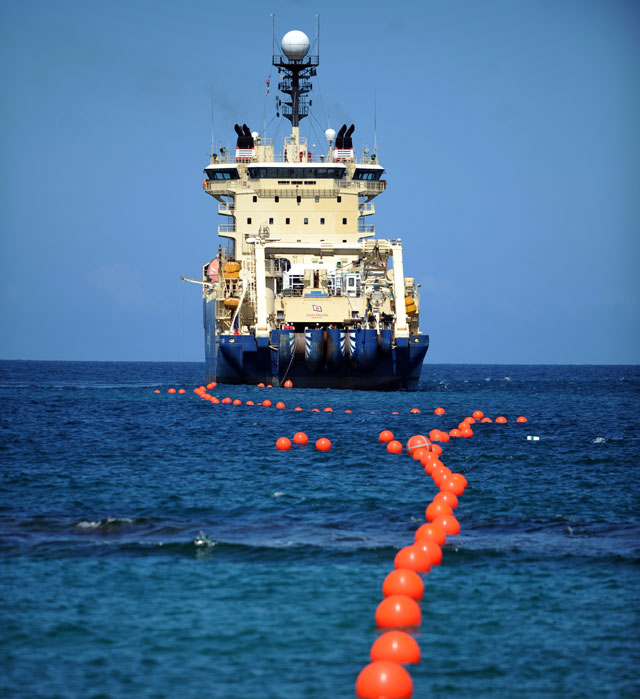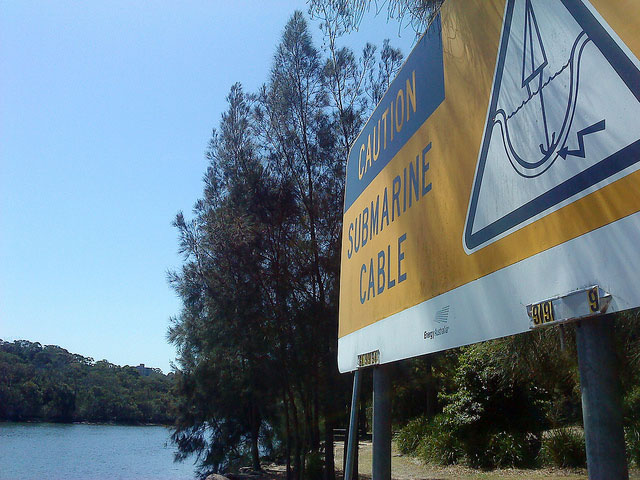Southeast Asia is powering through an upgrade of its online connectivity, opening up
new opportunities for the region’s businesses and citizens
By Leigh Ferguson
Asean is heading for a milestone in its connectivity: In March, the contracts for a state-of-the-art high-speed internet cable for the region were signed. Slated to be constructed in 2016, it would prove to be a huge step towards Asean’s goal of economic integration.
The Southeast Asia-Middle East-Western Europe (SMW5) internet connection line is a submarine cable system that will connect Singapore to Europe and will serve as a new platform for future business information and communications technology (ICTs). It has been praised for its potential to offer significantly faster internet speeds to the region than the previous cable installed in 2004.

The Asean member states of Thailand, Myanmar, Malaysia, Indonesia and Singapore will host landing points and can “expect to benefit the most”, said Joseph Jasper, spokesperson for Japanese tech giant NEC, a major investor in the cable.
While Southeast Asia has been coined a hotbed for digital adoption, infrastructure and supportive policies are lagging behind.
“Domestic policies and infrastructure need to be updated too, in order for these countries to really reap the advantages of being better connected with the rest of the region and the world,” said Moe Thuzar, Asean Studies Centre lead researcher at the Institute of Southeast Asian Studies (ISEAS) in Singapore.
“We are confident the undersea [cable] technology will provide us with the flexibility to address the increasing requirements for connectivity, as well as address new growth areas such as cloud computing for remote access,” stressed Linette Lee, chairperson of the SMW5 Management Committee. However, the majority of Asean nations are playing catch-up as many developing nations have not yet adopted specific policies for cloud services.
A United Nations Conference on Trade and Development (UNCTAD) report recently highlighted Southeast Asia’s contrasting approaches to cloud computing, stating there is a “need to address legal and infrastructure challenges”. According to the UNCTAD, Singapore is closest to facilitating the adoption of cloud services through a range of policy, investment and tax initiatives.
Overall, however, less-developed countries with fragmented populations such as Cambodia, Myanmar and Laos, will also benefit from the SMW5. “Asean members with large rural populations would stand to benefit the most from ‘leapfrogging’ to improved connectivity via faster speeds and up-to-date technology,” Thuzar said. In countries such as Myanmar, where the communications sector has just opened up and infrastructure is basic, “the introduction of mobile banking for farmers in rural areas will greatly facilitate their access to credit”, she added.
The new high-speed cable will be built by France-based Alcatel-Lucent and NEC, and a similar submarine cable called AAE-1 is also underway for 2016. Both aim to satisfy the growing demand for bandwidth in Asia, which is overloading the already-installed connections with traffic.
The increase in internet users is due to a number of factors. “Evolving demographics have created a critical and fast-growing mass of youthful, urban, middle-class consumers who are hungry for the best digital experiences technology can offer,” according to the 2012 Surfing Southeast Asia’s Powerful Digital Wave report from consulting firm Accenture. “Steady improvements in the price-to-performance ratio of mobile devices, coupled with improvements to battery life, have helped consumers bypass infrastructure roadblocks, especially in the less developed markets,” the report added.
With more than 60 million people browsing the web, the UNCTAD recognises electronic commerce as “a key component for Asean to realise its vision of a regionally integrated economy”. “Ultra-broadband access is essential for sustainable growth and development,” although Southeast Asia is still preparing itself for cloud computing, according to a statement from NEC.

Startups are thriving in Asean, with investors pouring over half a billion dollars into e-commerce last year, according to online news source Tech in Asia. Indonesia is ranked as the most “e-commerce ready” in the region, followed by Singapore, according to Vela Asia’s 2013 Southeast Asia eCommerce Readiness Index, which analyses retail behaviour.
Despite low levels of fixed broadband connectivity in the region, mobile phone penetration in Southeast Asian countries is higher than the global average, and is continuing to grow, according to the Accenture report.
The increase in mobile phone usage is advantageous for the e-retail sector, and sees online retailer Amazon facing an increasing number of competitors in the region. The German business-to-consumer startup Rocket Internet operates a large portfolio of e-commerce companies throughout Southeast Asia, including Lazada, an online department store which is said to be Amazon’s biggest competitor in the region. There is “huge potential for this populous region to replicate online shopping behaviours from developed countries”, said Maximilian Bittner, Lazada’s regional CEO, after confirming JP Morgan’s investment in the venture.
With Asean home to some of the world’s largest populations of social media users, e-commerce companies can utilise these platforms as a gateway to reaching potential new customers. Malaysia, the Philippines and Thailand belong to the world’s top 15 Facebook users by penetration, according to a 2013 report by Comscore, an internet analytics company.
More than 40% of global internet users are now based in the Asia-Pacific, with Southeast Asian markets accounting for approximately 10% of the Asia-Pacific online population, the report said. Despite being one of the poorest Asean countries in terms of GDP, Vietnam has the most active online population, with 16.1 million monthly users, Comscore revealed.
While the SMW5 will enhance connectivity between Singapore and Europe, the pending signing of Singapore’s Free Trade Agreement with the EU is also set to boost cross-border e-commerce between the two regions.
Still, with Asean’s internet user numbers booming, there are various obstacles to obtaining effective connectivity in developing states. For e-commerce in particular, problems include underdevelopment of the region’s financial services sector and logistical hurdles such as shipping, electricity, card-payment systems and more. While the SMW5 will provide a valuable platform for the e-commerce sector to expand, high-speed internet alone does not necessarily ensure economic growth.
Despite progressive steps towards enhancing infrastructure and connectivity throughout the region, internet penetration is still a significant issue and is reflective of development fragmentation in Southeast Asian nations. Internet penetration is below 40% of the population in every country except Singapore, Malaysia and Brunei, according to an International Telecommunications Union report. It scales down to 26.5% in Thailand, and single digits in Cambodia, Laos and Myanmar.
Organisations such as the Asian Development Bank (ADB) seek to bridge the growing digital divide within Southeast Asia. “Rapid advances in information and communications technology have created tremendous opportunities for economic and social gains in the world’s poorest areas,” according to the ADB’s website.

Photo: Creative Commons/ItsJegh
Reliable connectivity is crucial, because “if communications are absent or unstable, companies may be reluctant to enter that market”, NEC’s statement added.
Asean governments have taken progressive measures in developing supportive infrastructure. For example, Malaysia’s government in 2012 offered a rebate on older 3G phones to youths between the ages of 21 and 30, in a bid to increase internet penetration for lower-income groups and youths in rural areas.
As current research shows, there is a consensus that internet penetration is improving overall, and social media use is skyrocketing. To make the most of lightning-speed internet infrastructure, connectivity, in the fullest sense of the word, is necessary. “The lack of physical and institutional infrastructure invariably leads to higher transaction costs and hampers better connectivity,” said ISEAS’s Thuzar.
Supportive measures for the future are essential, such as the National Centre for Asia-Pacific’s (APEC) Multi-Year Plan on Infrastructure Development and Investment, which articulates steps for boosting private-sector involvement, and the Asean ICT Masterplan 2015, which focuses on six strategic plans including economic transformation, infrastructure development and bridging the digital divide.
So while the new high-speed cable will provide a platform allowing e-commerce in the region to flourish, low internet penetration will prevent the infrastructure from being used to its full potential. Asean countries will need to invest about $60 billion per year to address current infrastructure deficiencies, according to the ADB. And the return on such an investment is potentially significant for the region’s economies – a 10% increase in infrastructure provision raises long-term growth by 1%, the World Bank estimates.
However, with a prediction of almost 200 million new internet users coming online between 2010 and 2020 in the Asean-6 area, the SMW5 will lay the vital primary foundation to support this unprecedented growth.
